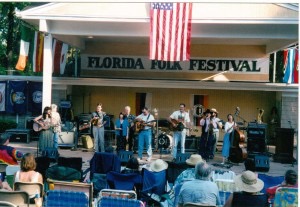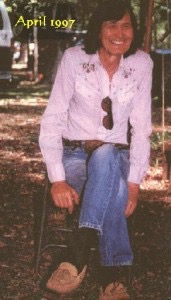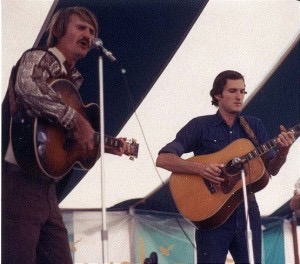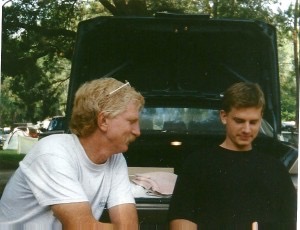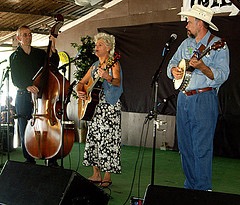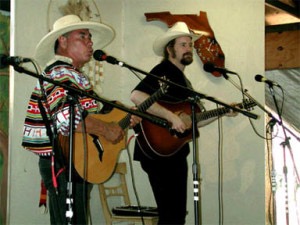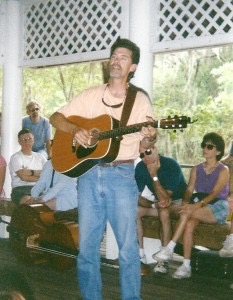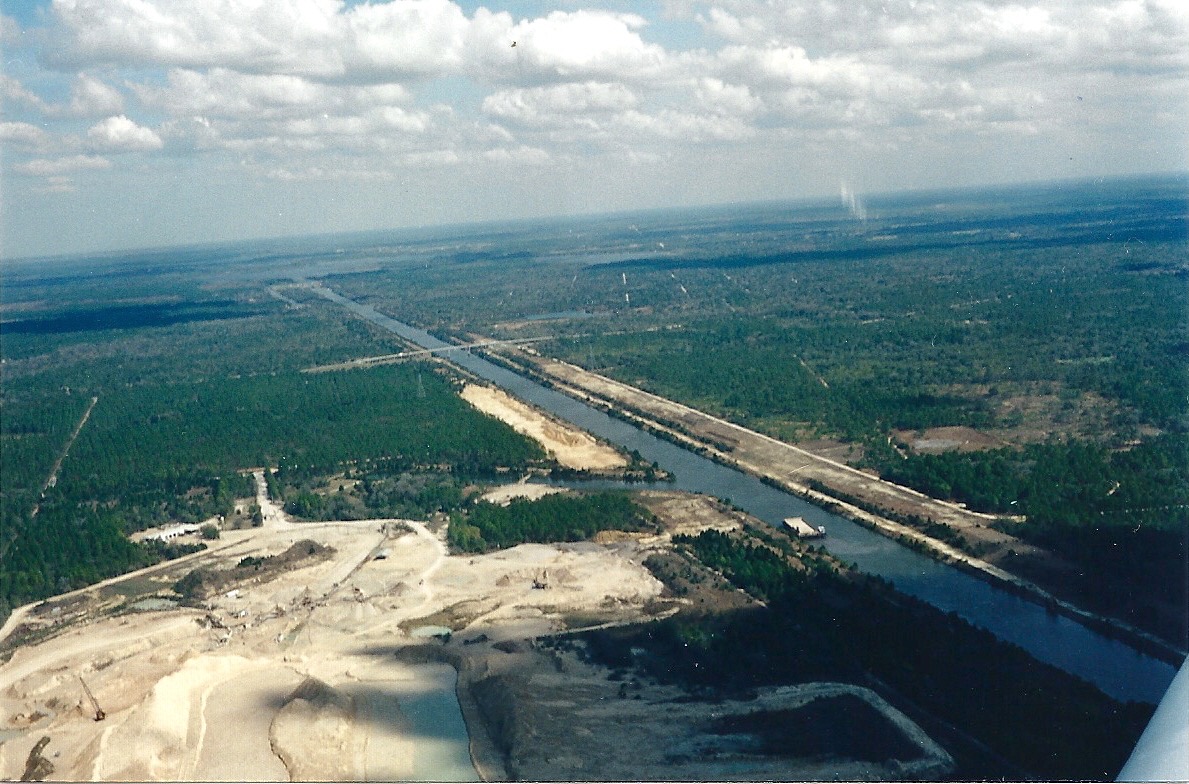Matthew Kales, Program Director at Upper Chattahoochee River Keeper (speaking with , reporter Joshua Azriel)
Azriel – I’m here with Matt Kales, please tell me your title.
Kales – I’m the program manager for river basin protection with the Upper Chattahoochee River Keeper, and the primary bulk of my duties focus on the tri-state water wars coordinating all the conservation NGOs in both basins to address the issues that are emerging as part of the water wars.
Azriel – How long have you been active in this issue?
Kales – Over a year. Prior to coming here to River Keeper I worked for an organization called the Georgia Conservancy which is the oldest state wide conservation NGO in the state of Georgia and one of my duties there as a water policy analyst was tracking and analyzing the water wars in both basins and developing policy for my organization on those issues.
Azriel – How long have you lived in Georgia, are you a native?
Kales – I’m not a native, I’m a Yankee, I come from Boston. I came down to the University of Georgia in 1996 to pursue my masters in the dept. of Geography and actually the tri-state water wars was an issue that in my studies in the context of water resources geography I looked at quite closely so I was well acquainted with the issue before I started working on it professionally.
Azriel – Now you call it the tri-state water wars. Is that a nickname you called it or is that how it is commonly referred to in all the three states?
Kales – That is very much the colloquial name. I don’t think you’d necessarily hear the official belligerents themselves whether it was the negotiators or the team leaders for the various states involved or the federal agencies involved call it the tri-state water wars. I think lately there’s been an effort to downplay the more bellicose aspects but that is very much what it is and what we refer to it in the conservation community but the technical name, the ACF ACT Allocation Negotiations, of course that stands for Apalachicola Chattahoochee Flint and Alabama Coosa Talapoosa River systems and the process by which they are going to be divided amongst the various states.
Azriel – Is this what you studied getting your masters in geography?
Kales – This was a case study I looked at. My studies focused on inter and intra state water resources conflict based on quality and quantity. This is fast emerging as a classic example. In fact, a gentleman at the Univ. of Alabama, a geographer named Aaron Wolf took his students through this case study as an example of how to resolve and settle peaceably interstate water conflicts. He has since moved on to Portland State but anyway this is regionally the hot bottom issue and the really classic case study for this type of interstate problem.
Azriel – In general what is the Georgia perspective on pollution issues related to the Chattahooche River?
Kales – Let me ask you when you say Georgia are you saying institutional perspective from the state of Georgia or the conservation NGO perspective?
Azriel – Let’s start with the institutional and then we’ll go the conservation perspective.
Kales – I can’t report to speak for the state of Georgia but it’s our read on the Georgia proposal and as a member of the Georgia Governors Advisory Council on Tri-state water issues that Georgia’s approach to this issue is through a reservoir operation and management scheme. Basically this is a heavily regulated system and when I say that I mean there are a lot of dams, a lot of reservoirs, a lot of structures that as they’ve been built over the years have altered and regulated the natural flow regimes in these systems the way in which the river initially evolved and the critters that lived in there adapted to it. The dams and the reservoirs that were built for hydropower, navigation, water supply, and now they’ve become used for recreation have been hit upon as the mechanism about which to allocate water seasonally during periods of draught during higher flow periods and Georgia’s idea is to manage the reservoirs in the system as a whole as if draught were imminent, keep as much water as possible behind the dam while meeting the needs of downstream neighbors. That’s what this whole compact and allocation formula is about. The idea is to store water, trap what precipitation we can and keep it behind the dam for future use in periods of draught.
Azriel – And the NGO perspective?
Kales – One of the things that we’re really focused on here and Upper Chattahoochee River Keeper has been a critical player I think over the years in getting this language and these concepts both in the compacts itself but also in the general dialogue are the issues of water quality and biological resource issues. There’s also an issue of flows that we’re concerned about that affect both water quality, biological resources, and of course recreation and aesthetics as well. What we’re interested in seeing here is an allocation formula that equitably apportions the waters, provides the water we need for municipal and industrial use, for drinking water for example for waste water assimilation but also provides for adequate and even enhanced and restored water quality in certain reaches of the river throughout the system where we’ve had water quality problems and provides the flow in terms of quality, quantity, and timing for the aquatic animals and biological resources that are dependent and rely upon certain flow regimes for propagation for spawning and for various stages of their life.
Azriel – Are you talking about specifically for Georgia or for all 3 states?
Kales – No though we’re an organization based in Georgia and our purview is defined largely by the upper basin, we’re very much aware and concerned about the downstream impacts of what happens in the headwaters areas of the basin. So anything that occurs here whether its south of Buford dam in the metro Atlanta vicinity or south of the city is ultimately going to have an impact downstream all the way to Apalachicola And that’s a very real and a very important part of our activities and an important part of our approach to these issues.
Azriel – What are the main concerns here in Georgia about water allocation?
Kales – OK again without pretending to being able to speak for the state of Georgia per say, it’s my impression and the impression of most of the conservation NGOs involved in this issue that one of the drivers if not the primary driver for Georgia’s approach to allocation is metro Atlanta MNI municipal and industrial use. That’s the water that goes to water our lawns, for drinking water, to wash our cars, for waste water assimilation for industrial permits, those people that discharge directly to the river. I think the idea here is Georgia has experienced explosive growth. After W.W.II in the post war period but really in the last 20 years the demographic growth, the forecasting here has exceeded everybody’s wildest projections.
Just the other day, a colleague of ours at EPA looked at some of the intercensal, the numbers that come out between on demographics, between the census 1990 and the ones coming out in 2000 and we’ve already surpassed growth in most of the counties north of Whitesburg which is a key caging station on the Chattahoochee River…the point I’m trying to make here is that we’re really fast running out of water, that’s something the state of Georgia has admitted, the state of Georgia has acknowledged and we need to look for alternate sources of water. And the Chattahoochee can only support so many people in the metro Atlanta area and all they require in terms of water.
On the other side of the coin, as I alluded to earlier, those in the conservation community are very concerned that any allocation formula that’s developed by the states and approved by the federal agencies has in it provisions for water quality, for biological resources, for recreation, for uses what we call in stream uses not your instrumental off stream uses for say watering lawns or industrial processing etc. but the uses for the natural system that require water.
Azriel – Have there been any proposals to, I know metro Atlanta encompasses looks like close to 10 counties.
Kales – There’s actually 13 county planning area for the Atlanta regional commission but there’s effectively 20 counties because of their growth and because of the sprawl and development here in the metro area have become again effectively part of the metro Atlanta area.
Azriel- Are there plans on the books to try and slow the growth or is it a matter of we are going to take it as far as it can go?
Kales – Atlanta has become by all accounts and I am paraphrasing here from other folks but a poster child for sprawl. Now sprawl is this pattern of development we’ve seen more and more in parts of the U.S. where there are no natural barriers to growth where land use is unplanned and land use is aimed primarily at expediting economic development with little concern for its environmental effects whether its tree cover, open space, water quality, air quality, and just general quality of like. And while sprawl has not been a major part of the dialogue in the official negotiations here its very much a parallel track. What’s happening in the metro Atlanta region is very much being born out in the tri-state water wars because you have a region whose explosive growth and until recently refusal institutionally to deal with that explosive growth and manage sprawl and manage expansion in a way that’s not detrimental to the environment has resulted in a shortage of water, has resulted in a projected short fall of water resources I should say, and resulted in a direct confrontation inter-state confrontation and also there’s another issue we’re not really addressing here and that’s the intra-state allocation of the Chattahoochee River and its tributaries. Basically you’ve got two very different Georgias. You’ve got an urbanizing north Georgia that’s basically represented by the metro Atlanta area and then south of the fall line or the nat line as we say you’ve got largely rural agricultural Georgia that’s largely dependent on these water resources for its agricultural economy.
Azriel – Where is this line where it becomes rural, Macon?
Kales – Well I mean Atlanta is funny because you can drive south fifteen miles from the heart of the city into South Fulton and you wouldn’t know you’re in one of the fastest growing metropolitan areas of the U.S. It’s fairly bucolic, you’ve got farms, it’s quite rural. But south of Columbus is where we really start to look. It’s a geographic and physiographic divide, it’s call the fall line where the land slopes precipitously from a piedmont to a coastal plain, um, but it’s also very much a cultural and economic line as well and you start to get into the more agricultural rural environment much like you see in the panhandle of Florida. Many people who live down there have claimed they’ve got more in common in terms of the physical environment, the economic environment, and the socio-cultural environment with Florida’s panhandle at that point.
Azriel – Is there conflict within the state of Georgia between the farmers versus the demands of Atlanta and how that should be handled in this inter-state conflict?
Kales – I think there’s a growing concern and its been manifested at several regional water resources conferences and leadership symposiums in S.W. Georgia whereby farmers and agribusiness interests, economic development interests in S.W. Georgia, who rely as you said, upon the Chattahoochee and Flint Rivers but particularly the aquifers, the subterranean ground water resources there, are beginning to see that their water resources needs and requirements may well be sacrificed on the alter of metro Atlanta MNI. That is to say that the water demands upstream in the urbanized areas particularly metro Atlanta may supersede in an allocation formula the needs of the SW Georgia largely agricultural interests to the point that there will be caps placed upon the amount of water that farmers can withdraw out of what is called the upper Floridan aquifer which is the major ground water system in that region.
Azriel- From what I’ve read Alabama’s point of view is similar to Florida’s with regard to Atlanta’s growth.
Kales – Well I think there’s a general concern that because metro Atlanta is situated on effectively the head waters of these basins, it isn’t technically in the head waters but its far up stream in comparison to Alabama and Florida, that anything that happens here to impact water quality or water quantity could conceivably adversely impact interests down stream be it economic interests in the Apalachicola Bay the oyster fisheries and harvest areas down there or economic development in Alabama. If you don’t have enough water to grow you can’t expand your urban bases and economic bases in Alabama. It’s, I keep referring to the economic aspects of this issue but that’s what its really become in many ways.
Here in the conservation community we’re extremely concerned obviously about the ecological aspects, the public health impacts, the recreational impacts, the more traditional impacts you might see from a river basin management scheme. But what it comes down to and many folks’ opinion and mine is this is largely an economic conflict. Water has become a vehicle, an incredibly important component for our economic development in this region. We’ve entered into what is really a paradoxical situation. We’ve got a temperate region with as much as 52 inches of precipitation annually which makes, obviously out west its much more arid but, what we have is a seemingly abundant water supply but because of recent demands, due to urban growth due to some degree to water quality, how we’ve treated our waters resources we’ve suddenly realized we don’t have as much water as we think we had and its resulted in this very tense and at times controversial and belligerent situation.
Azriel – If there are no efforts down the road to slow Atlanta’s growth how can any compact deal with this?
Kale – Well if its written in the compact, supposedly its written in stone to the degree that the participating states need to abide by the formula whatever that might be i.e. Georgia needs to deliver a certain amount of water at certain times of the year at certain designated locations. Now that still needs to be hashed out, that’s turning out to be a real bugaboo technically. Where that water’s going to be delivered, how it’s going to be delivered, and here’s the real crux how its going to be monitored and how its going to be verified. This verification issue you probably know is become as you know real potential wrench in the wheel here. And if there’s a compact and for it to be adhered to, Atlanta has to find some way to meet its water resources demands through conservation which is a conspicuously absent component of any dialogue. We’ve not heard anything about aggressive water conservation here.
The Atlanta regional commission which is the planning body for the metropolitan area has stated as much as 10 percent of future water resources needs in the Atlanta region will have to be met by conservation, but we don’t see any steps in that direction addressing water quality so that water that goes down stream will be viable for down stream users that’s another way that Atlanta can think about conserving its water resources. And finally just finding a way to live within its means, what we’re seeing here is a metro area that is writing natural resources checks, its writing growth checks that it can’t cash. We’ve exceeded our carrying capacity and the tri-state water wars is very much a wake up call to that affect.
Azriel – As it stands now from people I’ve spoken to in Florida, the Apalachicola River and Bay is fine, there are no problems with it. Their concern is the future, 30 or 40 years from now. How does one plan for that far down the road?
Kales – That’s an excellent question Josh. Florida if you look carefully at its proposal has proposed an interim allocation formula and what we believe that really represents is something called adaptive management. Adaptive management is an eco-system concept or tool that is fairly self explanatory. The idea is you take a system and you put a management plan in place, you implement it and you monitor very carefully what the feedback from that system is. If you’re delivering for example certain amounts of water at a certain place, you look at the biological and the chemical composition of that reach of that river and you see how its fairing. Is it being enhanced, is it being adversely impacted and then you adjust accordingly. It’s a very logical way to manage a system because the reality is these systems they have evolved over time, they’ve adapted over time and you can’t just go ahead and tweek them due to human requirements and human needs and expect them to just fall into place. You really need to be careful in terms of how you manage the system.
Adaptive management is one way we can assure we’re basically managing the system in an ecologically sound fashion. So Florida’s approach to that some of the other conservation groups including the nature conservancy have been very vocal about the need for adaptive management. River Keeper has promoted this concept as well and we really hope that Georgia, Alabama, and Florida take into account this need for adaptive management when they come up with their final management plan.
Azriel – Based on your involvement with this issue, what seems to be the general attitude Georgia has toward Alabama’s and Florida’s needs?
Kales – Well, it’s been a real interesting dynamic because traditionally if you go all the way back to Babylonian era if you have water wars whereby the upstream entity could control all the shots, but the specter of litigation, the need to manage public trust resources, and I think the awareness that upstream parties have a basic and fundamental responsibility to deliver water with adequate quality and quantity downstream has changed that dynamic and forced a cooperative partnership. There are political tensions that are only now being daylighted between Alabama and between Georgia. There are long standing rivalries over various issues that have manifested themselves in this process and that to some degree has obstructed some process in the negotiations.
Azriel – Has your organization proposed solutions to this?
Kales – Well in several comment letters to the Georgia negotiating team to the federal agencies including the Corp and as well as the governor of Georgia, River Keeper has proposed adaptive management, the need to provide for water quality and biological resources concerns all the things we discussed earlier as being primary to the conservation NGO focus and approach to these issues. It’s more than about just delivering a certain amount of water at certain time downstream for instrumental uses.
Azriel – Can you explain what adaptive management is?
Kales – Adaptive management is a very basic ecosystem management tool or concept whereby you monitor a system after a management plan has been implemented. You see what the feedback from that system is chemically, biologically, economically, and then you adjust accordingly so that management plan is ecologically sound in the best interests of the water dependent entities.
Azriel – From the point of view of your organization, are the negotiations on the right track?
Kales – Well we are definitely apprehensive about some of the technical difficulties that have recently come to light in terms of verification, in terms of the lack of adaptive management until recently that we saw for example in the Georgia plan. More recently we’ve detected also more bellicose tone in the Georgia negotiating team as far back as the General Assembly in February March. Briefings that were until then much more constructive and conciliatory began to take on a litigious tone which suggests to us there’s simultaneous tracks here. There’s a negotiating track but there’s also a potential litigation track that’s being prepared for.
Azriel – With regard to the tracks, what would be litigated?
Kales – That’s an excellent questions. A lot of what we could say at this point about litigation is speculative, and I’m hesitant to go into it because we’re still in the conservation community exploring whether litigation would be ultimately beneficial for our goals i.e. water quality and provisions for biological resources and a natural flow regime. It’s been suggested by experts who have experience in Western water wars which have sort of set the precedent for interstate and intrastate water allocation in the U.S. where obviously water is much more scarce and more contentious of a resource that were this to go to court it would go to the Supreme Court and it could take as many as ten years at great expense in both of terms of building a case and prosecuting a case as it were, but also the expenses incurred by the participating states. You’re talking about states that are heavily dependent economically on these water resources.
Metro Atlanta is the obvious example but as we discussed Apalachicola Bay requires certain fresh water inflows to keep the oyster fisheries and some of the other fin fisheries robust and economically viable. If this thing goes to court and water resources development project sup and down the river of any type are placed into suspension due to a moratorium, it could really adversely affect the region. Water is the lifeblood of this region, in some ways as much as the West even though there’s more of it here we’ve recently realized it’s a lot more scarce supply than we previously thought. There’s a gentleman or woman that would be appointed river master and this is a Supreme Court designate that would take 10 years…
Azriel – U.S. Supreme Court?
Kales – Yes, federal, U.S. Supreme Court would take 10 years to assemble all the facts in this case and that would really bog down this region in terms of its water resources development.
Azriel – From what I understand there’s a December 31st deadline. In Georgia there’s the farmers needs versus metro Atlanta and then Alabama and Florida’s needs. Do you think they’ll meet the deadline?
Kales – Before I answer that let me back up and say urban growth versus the farmers, it’s not so polar as that it’s not as binary, there are a lot of other interests and it’s a lot broader a scope within the urban context and the agricultural context. Those within the state are two of the primary water users vying for control of the water but there’s also obviously water quality aspects throughout the entire basin in all reaches of the river. There’s water supply, there’s recreation, sport fishing, paddling, aesthetics, and the biological resources. There’s also hydropower, navigation, you’re beginning to get a sense of how complex these allocations are. So don’t be misled by farmers versus urbanites it’s again a lot more complicated than that. This is as you know going into the 6 months of the extension, the allocation formula was originally to have been developed completely and ultimately approved by December 31st of 1998, that was stated in the original language of the compact. Whether or not they’re going to be able to pull it off…
Azriel – 1999
Kales – 1998 was the original deadline…
Azriel – OK
Kales – At the end of 1998 December 31st the states received with the acquiescence of the governor and the feds an extension. 12 more months to allocate the water, to come up with a formula. And what happened thus far is due to technical difficulties, logistical difficulties, staff shuffling in Alabama, and obviously a gubernatorial change over in all three states progress has been really slow. And for any formula to be put out in draft form for public comment and then put to the feds including the Corp for analysis, evaluation, and ultimately concurrence by the federal commissioner they have to have something on the table by early October. At this rate we don’t see that materializing in sufficient time but we remain optimistic hope springs eternal.
Azriel – If they fail it goes to the Supreme Court and the river master would be appointed, correct?
Kales – That’s one component of it. There seems to be a sentiment in each state and again this is speculative that each state is in the right. Georgia may feel like they’re in the right because they are at the upstream position. They are where the rivers rise in the headwaters. So its their god given right to take whatever water they need for their uses. Alabama and Florida as downstream entities may feel the exact inverse of that. They feel the dynamic is such that Georgia has an obligation to deliver a certain quality and quantity of water downstream.
So this entitlement, this issue of sovereignty over water resources within one state’s boundaries is fundamentally at odds with the nature of these river systems because as your well aware having been down to Apalachicola what we call the end of the pipe, these river don’t respect the state line. They rise where they want and they flow until they’re obviously dammed generally where they want and when they cross the border in Florida when they flow out of Lake Seminole for example the rivers don’t know in what state they are, they only know that they are continuing on their natural course. And so this overlay of a political context with artificial state boundaries and then intrastate boundaries whether its counties or municipalities or in Florida, water management districts which of course are based on a drainage system a little more logical, really are again at odds with the way these allocation formula negotiations are preceding.
Azriel – Is there anything you’d like to cover we’ve not covered yet?
Kales – I think one of the things we need to touch on is more of a philosophical issue with regards to these allocations. They have been controversial, they have been tense. Litigation has become a very real specter but one thing that we really need to keep hitting on and harping on and promoting is the opportunity that exists here. There’s an incredible potential to manage these basins which by the way happen to be amongst the most bio-diverse temperate freshwater ecosystems in the entire North American continent.
And up until now this whole issue or these suite of issues have been painted as this behemoth, this incredibly complex miasma of inter and intra state allocation, but what it really is an opportunity to set a precedent for basin management with an adaptive ecosystem focus to show the rest of the region, the rest of the country, and indeed the rest of the world, all of whom are watching this issue very closely, it’s gone from a little backyard dispute to a very important global issue, that these type of ecosystem management and base management plans can be developed cooperatively with the proper provisions for water quality for biological resources, you can manage the basins for instrumental i.e. human uses while at the same time keeping them in an ecologically sound and fairly natural rhythm.
Azriel – Are other regions of the country are watching to see what will happen here?
Kales – Undoubtedly, when this thing first evolved, when these wars first broke out, experts from all over the country but particularly the arid Southwest were brought in to consult with the various states and form the federal purview. Some of the legal background has been done by folks from New Mexico, Colorado all of whom have significant expertise in these western water wars where allocation is a very different game, a different animal because you’re dealing with what’s called prior appropriation. In the West if you set up on a stream you had those rights for perpetuity. Here in the East, east of the Rockies, we have something that’s based on Riparian law which is derived from English common law. It’s basically your entitled to a certain amount of water as an on stream user but you have to pass enough water downstream for the use of your downstream neighbors. So that’s the kind of framework or dynamic we’re operating under, and I think yes very much people are watching this again not only regionally but nationally perhaps internationally as well.
Azriel – What else would you like to add?
Kales – One last thing that I think gets lost in the shuffle as the states argue over sovereignty and who has the right to what water is that the waters and the resources in these basins constitute a public trust resource that is, it should be managed for the ultimate benefit of the people and the other inhabitants of these basins whether they’re aquatic resources or people who use them for recreation and that needs to be I think constantly…people need to be reminded of that fact as we pursue these negotiations so that we can truly equitably apportion these waters.
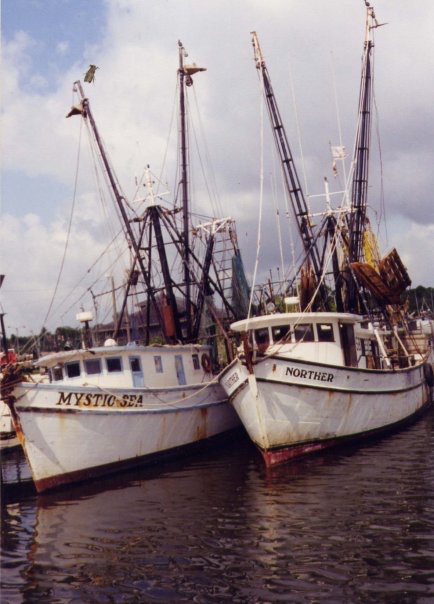

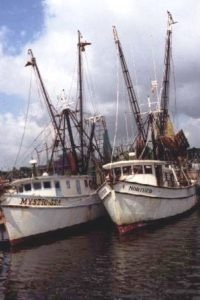 To learn more about the artists and their music for the Apalachicola Doin’ Time documentary click on the links below:
To learn more about the artists and their music for the Apalachicola Doin’ Time documentary click on the links below: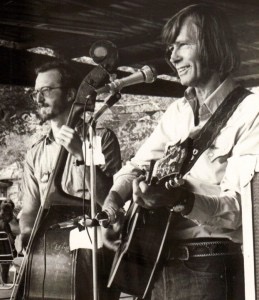

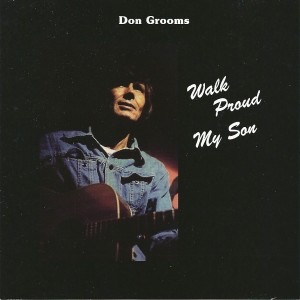
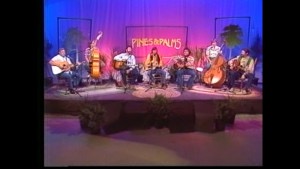 In September of 1988 Grooms hosted a a television program called,
In September of 1988 Grooms hosted a a television program called, 